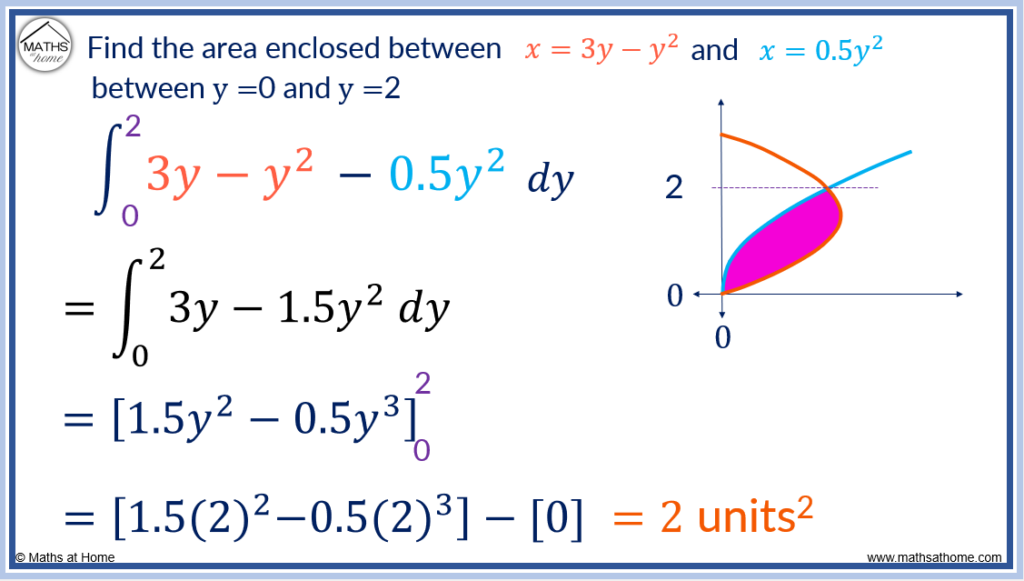Area Between Two Curves: Video Lesson
How to Find the Area Between Two Curves
To find the area between two curves, the formula is A=∫[f(x)-g(x)]dx, where f(x) is the upper curve and g(x) is the lower curve. The limits of integration are the values of x read from the x-axis for which the area is found between.
is the equation of the upper curve. This curve must be above the other curve.
is the equation of the lower curve. This curve must be below the other curve.
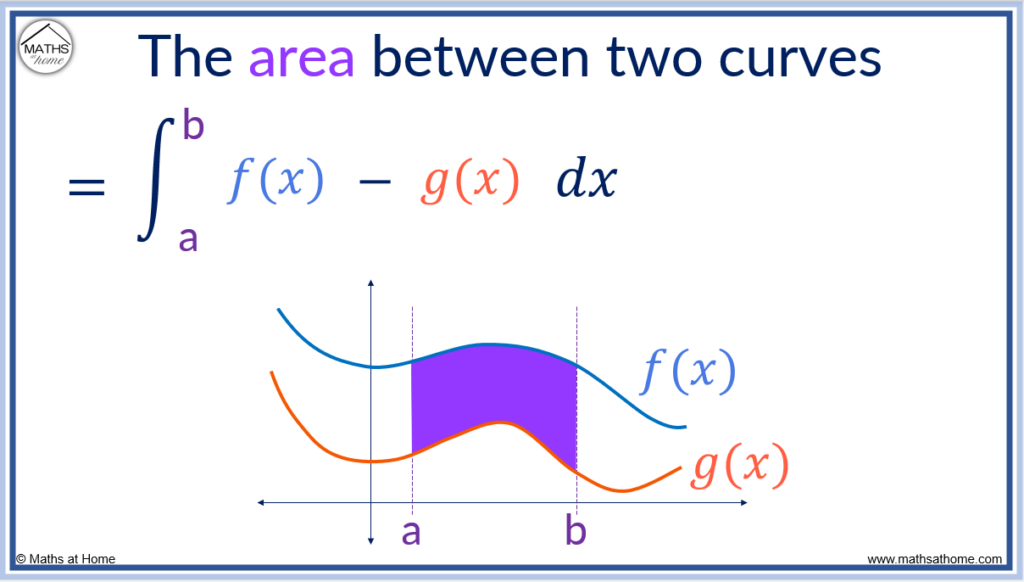
The formula for the area between two curves is derived through integrating each curve to obtain the area below it. Subtracting the integral of the lower curve from the integral of the upper curve provides the area between the two curves.
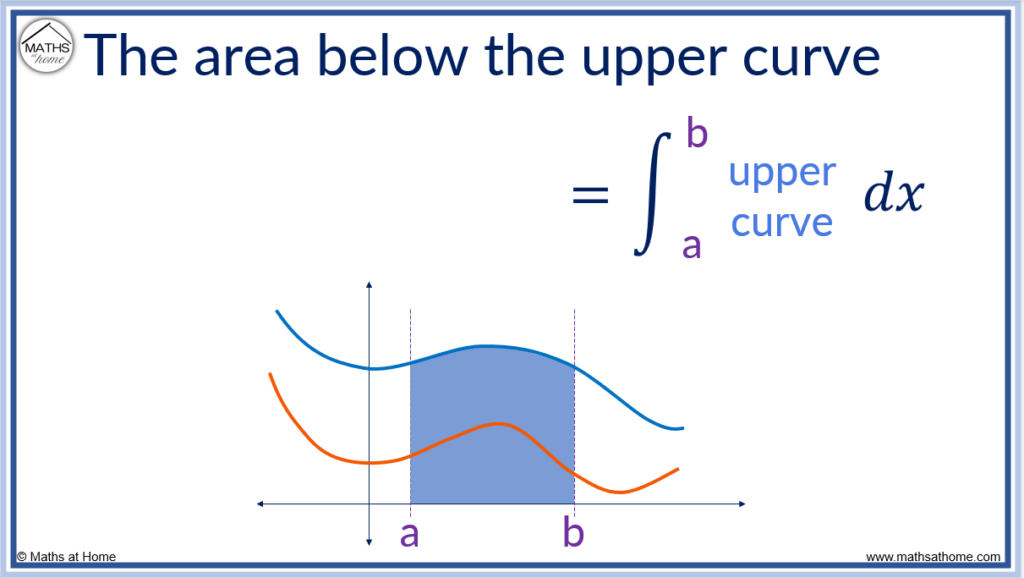
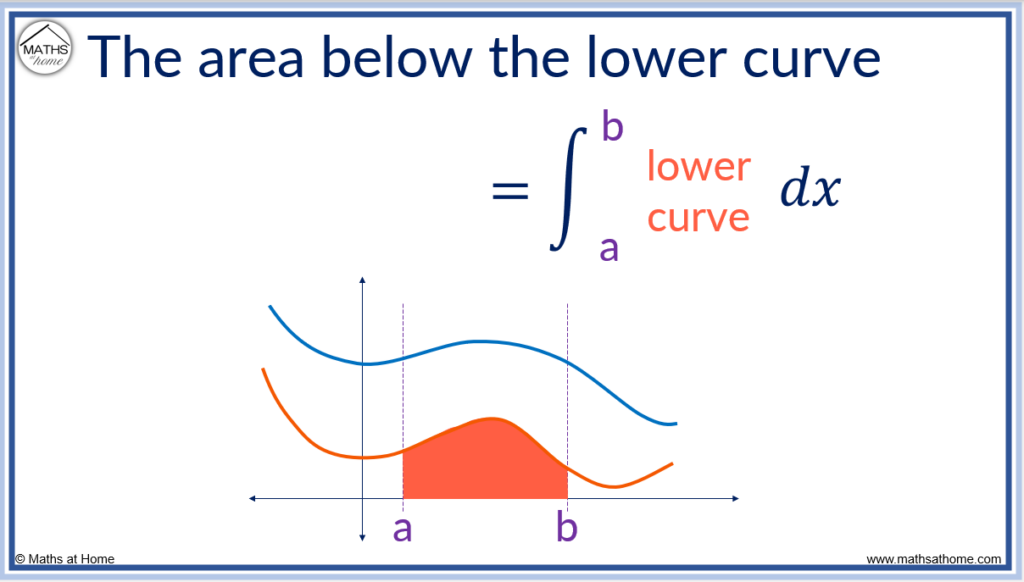

The steps to finding the area between two curves are:
- Find the 𝑥-coordinates of intersection of the curves
- Integrate the upper curve minus the lower curve within each region
- The limits of integration are the 𝑥-coordinates at the start and end of each region
- Add the areas of the individual regions to find the total area
For example, find the area between the two curves and
.
Step 1. Find the 𝑥–coordinates of intersection of the curves
To find the coordinates of intersection, solve the two equations simultaneously.
Setting the equations equal to each other and rearranging the right hand side of the equals sign to equal zero we get:
We can solve this equation by factoring out 𝑥:
Factorising the resulting quadratic:
Therefore
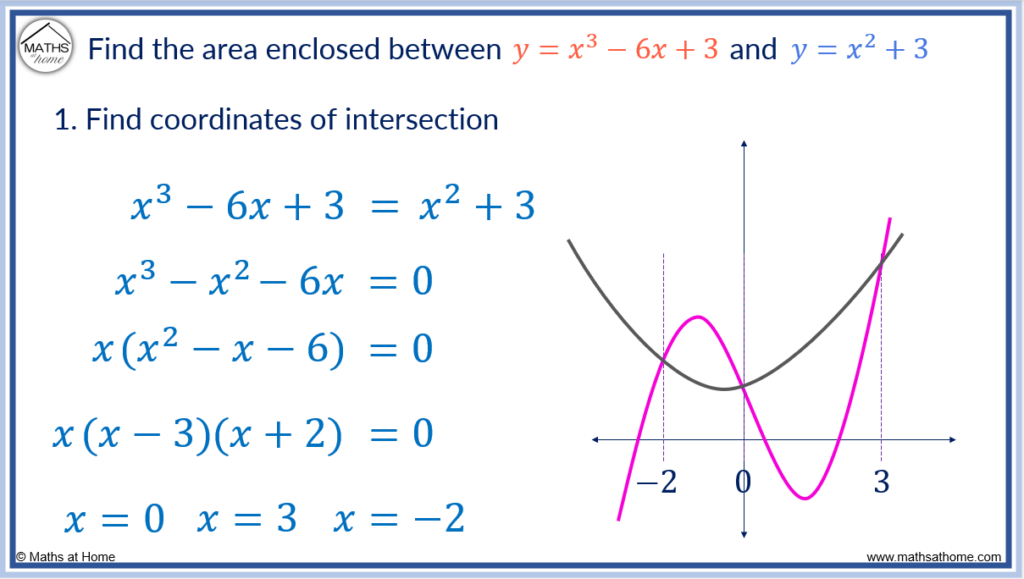
Step 2. Integrate the upper curve minus the lower curve in each region
In the first region, the limits of integration are from -2 to 0. These are the first two points of intersection found in step 1.
The upper curve is simply the curve that is above the other curve in the region chosen. The lower curve is the one that is below the other one.
In this region, the upper curve is and the lower curve is
.
We subtract the lower curve equation from the upper curve equation to get:
Step 3. The limits of integration are the 𝑥-coordinates at the start and end of each region
The region is found between the 𝑥 coordinates of -2 and 0. The area is found by integrating between the limits of -2 and 0.
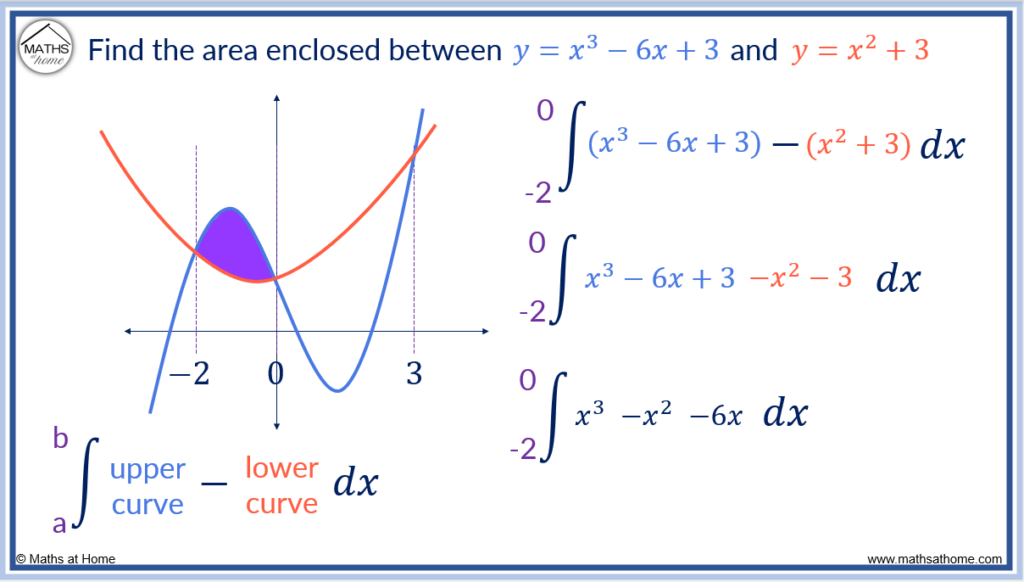
Integrating we get
.
Evaluate the integral to get .
This is the area of the first region.
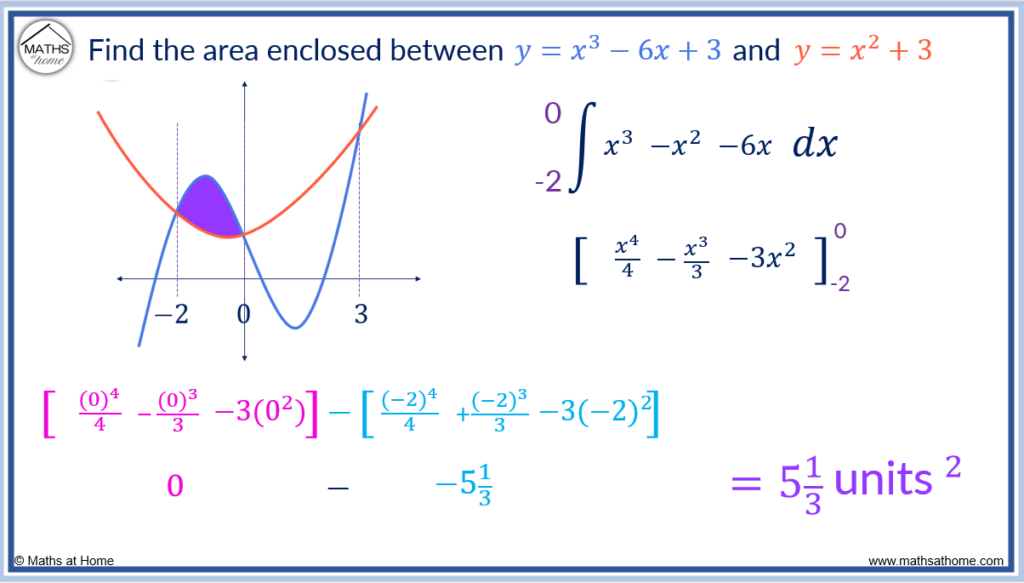
Now the area of the second region is found between the two curves bound between 0 and 3.
In this region, the upper curve has the equation and the lower curve is
.
The area between two curves is given by the integral of the upper curve subtract the lower curve.
simplifies to
.
The area is found by.
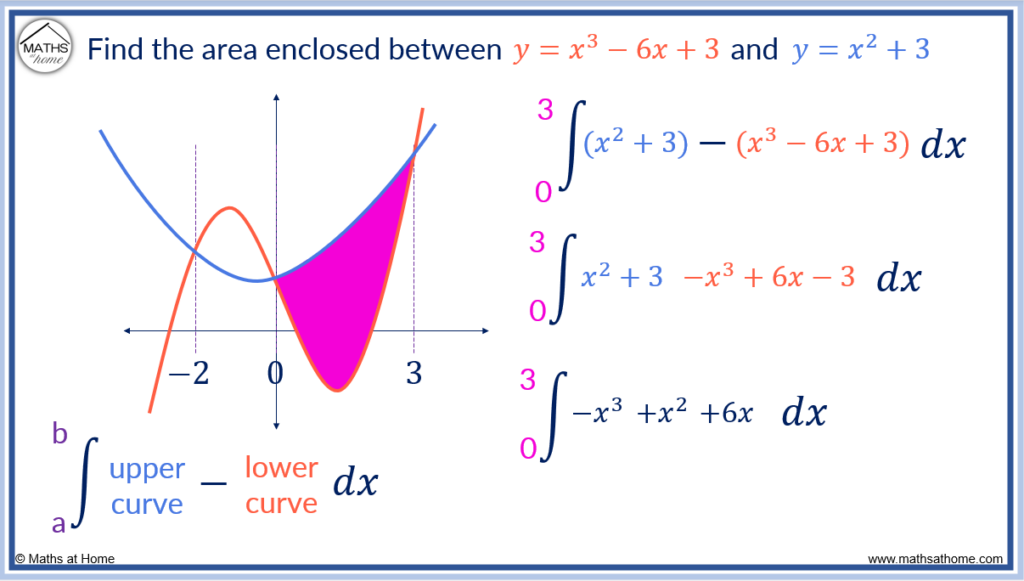
becomes
.
Evaluating this integral, .
This is the area of the second region between the two curves.
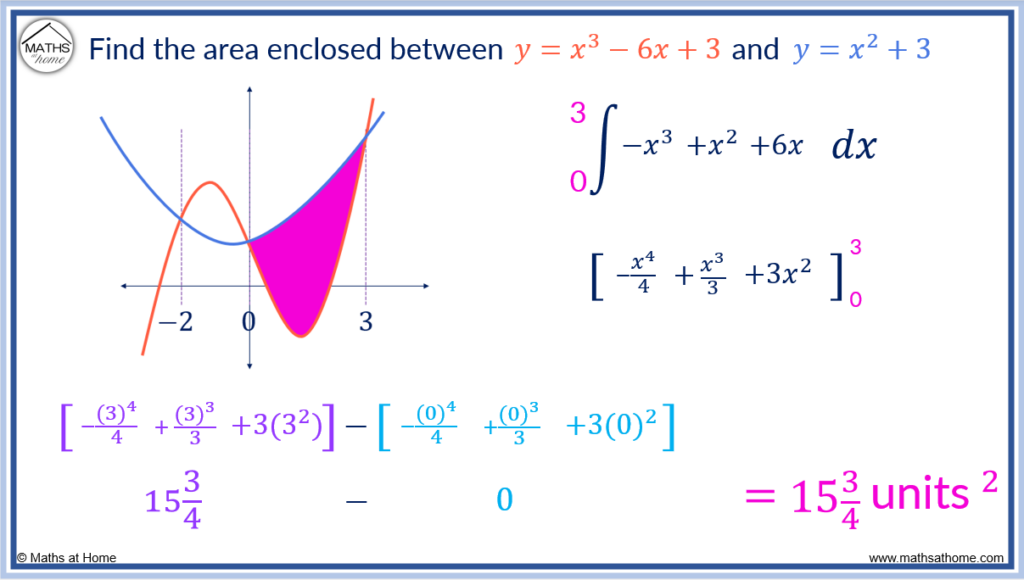
Step 4. Add the areas of the individual regions to find the total area
There are two regions between the two curves in this example.
Adding the two areas gives the total area between the two curves.
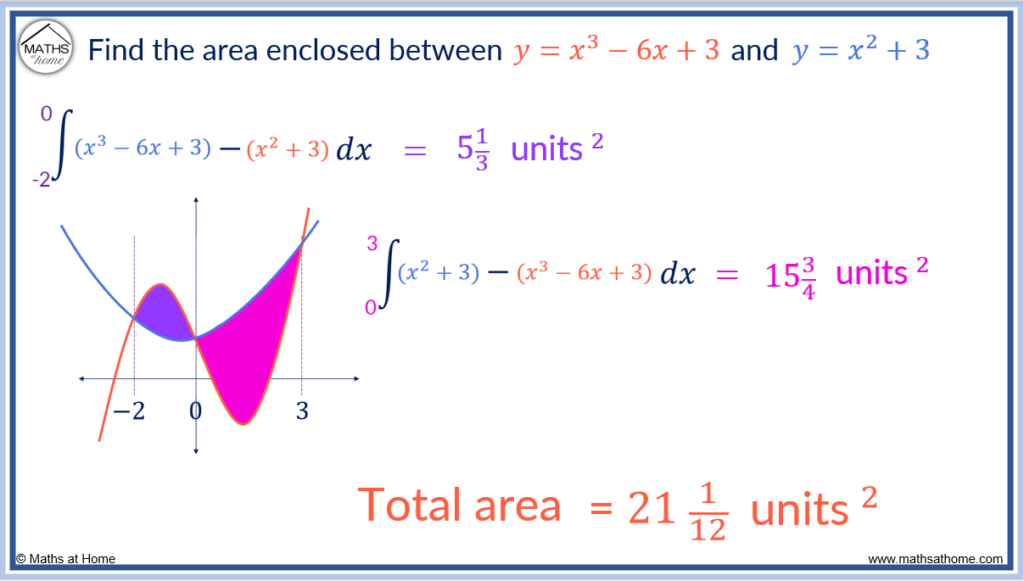
The area between two curves is always positive and will never be negative. If a negative area is obtained, an error must have been made in the calculation. This is true for the total area and the individual areas bound in each region.
Common mistakes made when finding the area between two curves are:
- Not identifying the upper and lower curve correctly for each individual region
- Finding incorrect limits of integration due to an error when solving the simultaneous equations
- Using the limits of integration in the wrong order
- Numerical mistakes particularly with subtracting negative numbers
Area Between Two Curves Problems and Solutions
Finding the Area Between Two Curves Below the x-axis
It does not matter if the area between two curves is below the x-axis. Simply identify the upper curve as the function that is above the lower curve. Subtract the equation of the lower curve from the equation of the upper curve and then integrate.
For example, find the area between the curves and
.
Step 1. Find the 𝑥–coordinates of intersection of the curves
The two equations can be solved simultaneously by setting the two equations equal to each other, rearranging for zero and then factorising.
becomes
, which factorises to
.
Therefore, the coordinates of intersection are 𝑥=4 and 𝑥=1.
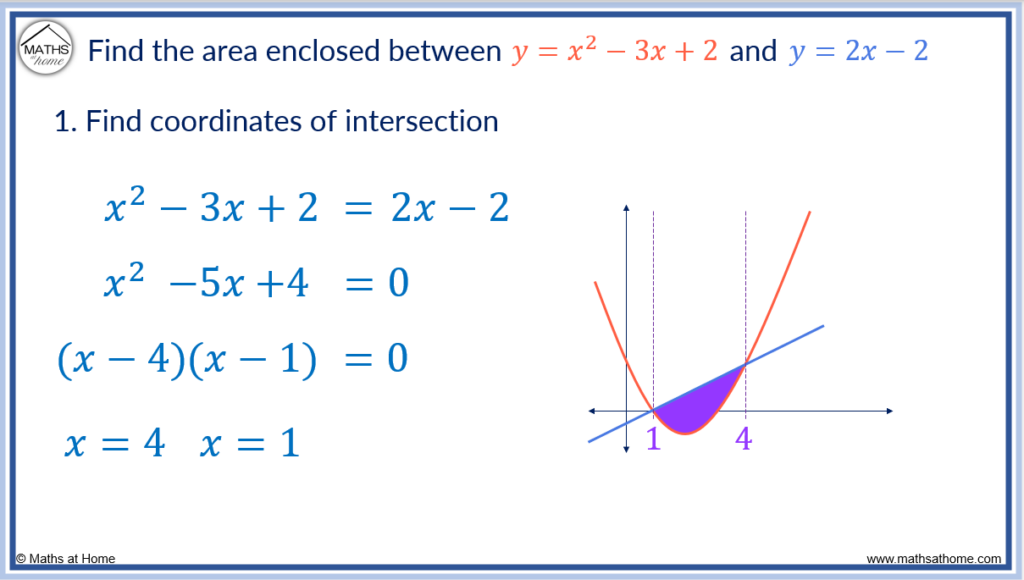
Step 2. Integrate the upper curve minus the lower curve in each region
There is only one region in this example. The linear equation is above the quadratic equation at all times in this region.
Therefore the upper curve is and the lower curve is
.
Subtracting the lower curve from the upper curve, the following expression is obtained:
Step 3. The limits of integration are the 𝑥-coordinates at the start and end of each region
The limits of integration are 1 and 4.
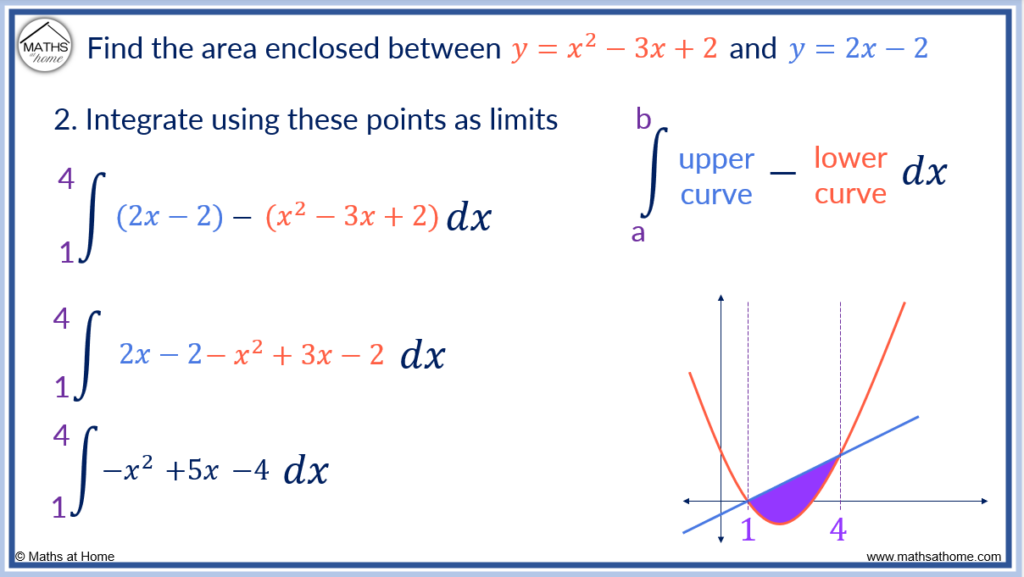
Integrating between this range:
becomes
.
Evaluating the integral, .
The area between the two curves is 4.5 units2.
It does not matter that the area went below the x-axis. The area is still given by the integral of the upper curve minus the lower curve.
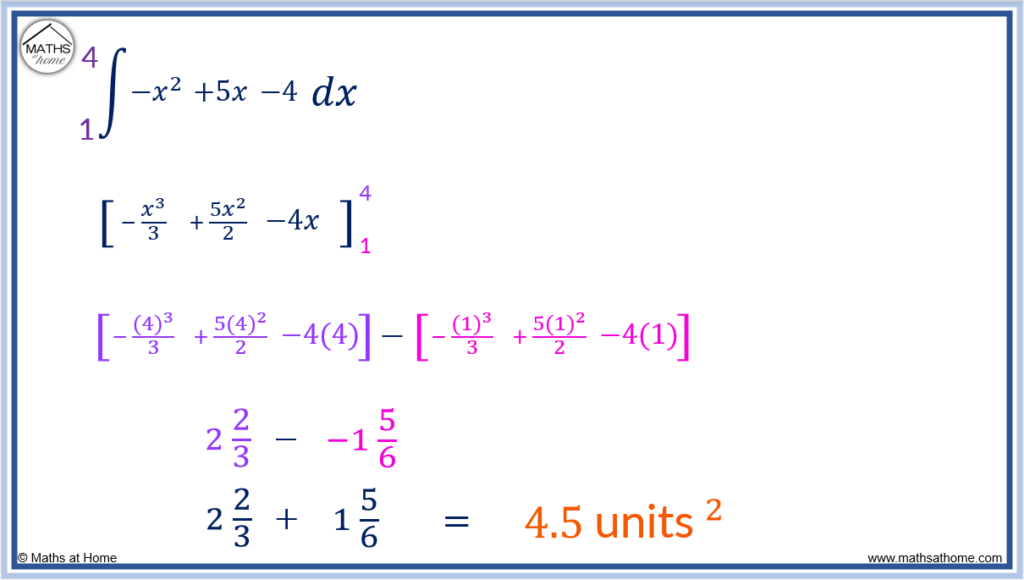
Finding the Area Between Two Exponential Curves
In this example, the area between two exponential curves is found.
Find the area enclosed between the exponential curves and
between 𝑥=0 and 𝑥=2.
The equation of the upper curve is and the equation of the lower curve is
.
The limits of integration are given as 0 and 2. Therefore the area between the two curves is given by:
which becomes
.
Evaluating this, the exact answer is .
This is approximately 20.410 units2.

Finding the Area Between Two Trigonometric Curves
For example, find the area bound between the curves sin(x) and cos(x) within the range .
The first step is to find the points of intersection between the curves of sin(𝑥) and cos(𝑥).
Set the equations of the curves equal to each other: .
Divide both sides of the equation by cos(𝑥) to get: .
Find the two angles within the range of for which tan(𝑥)=1.
or
.

The next step is to find the area bound between sin(𝑥) and cos(𝑥) from 𝑥=0 and .
The limits of integration are therefore 0 and .
In this region, the upper curve is and the lower curve is
.
The area of this region is therefore found as .
Integrating, the area is found as .
Evaluating the limits the integral becomes .
,
,
and
.
Evaluating this, the area is .
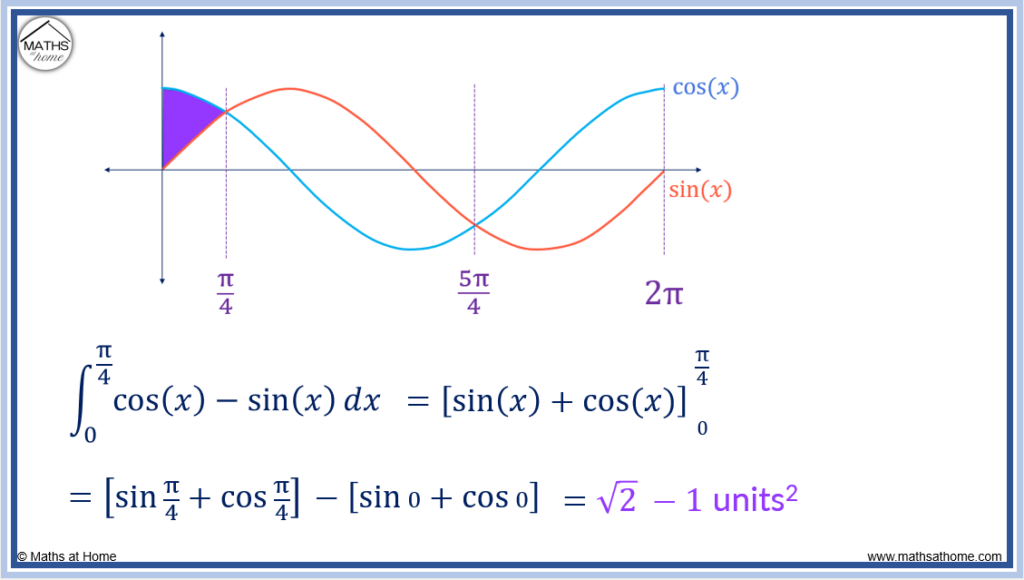
The next step is to find the area bound between sin(𝑥) and cos(𝑥) in the range .
In this region, the upper curve is sin(𝑥) and the lower curve is cos(𝑥).
The area is found with the integral .
Completing the integration we obtain: .
Evaluating the limits: .
,
,
and
.
Therefore the integral becomes which equals
.
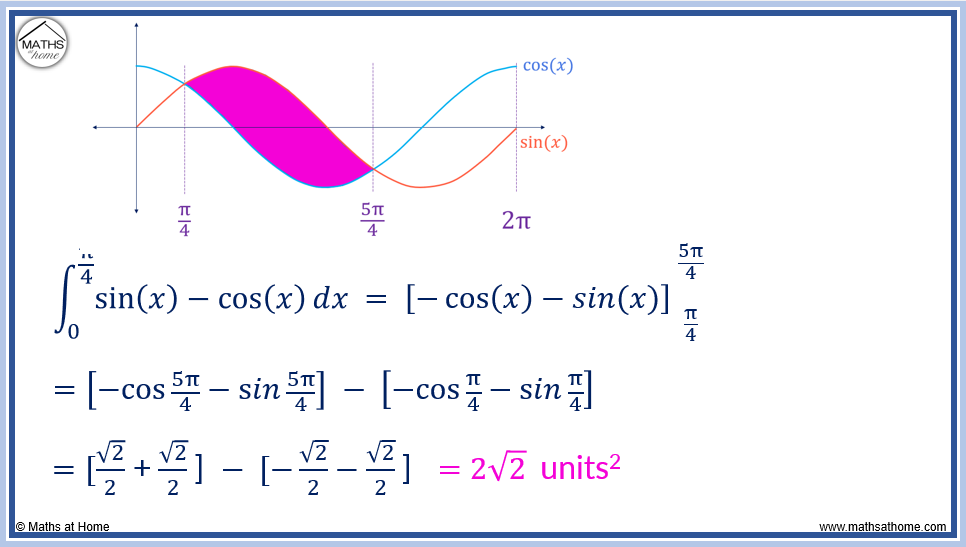
The next step is to find the area between sin(𝑥) and cos(𝑥) in the range .
The upper curve is cos(𝑥) and the lower curve is sin(𝑥).
The area between the curves is found with the integral: .
Completing the integration: .
Evaluating the limits, this becomes: .
,
,
and
.
The integral becomes: which equals
.
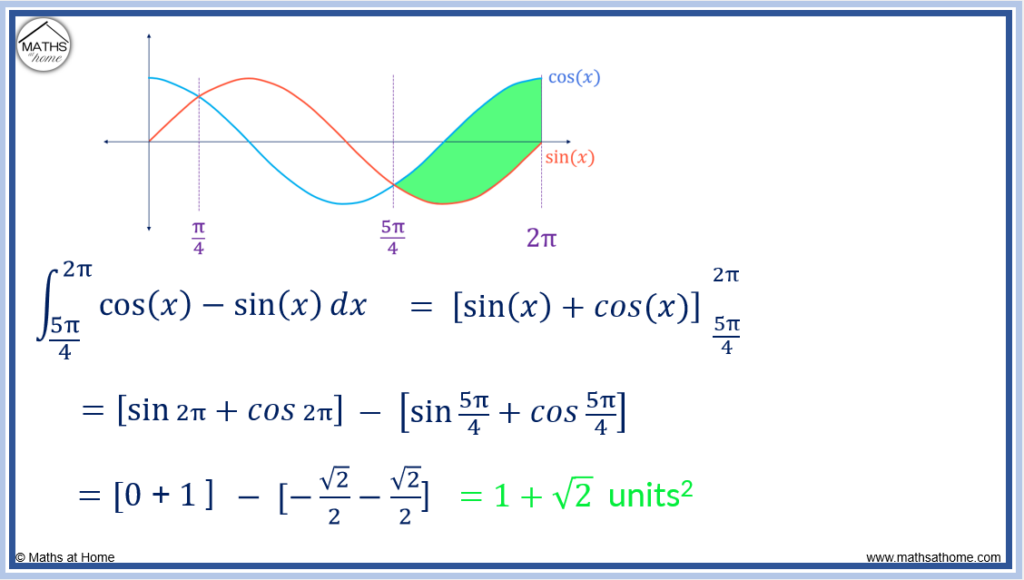
The total area between the curves is found by adding the areas of the three individual regions.
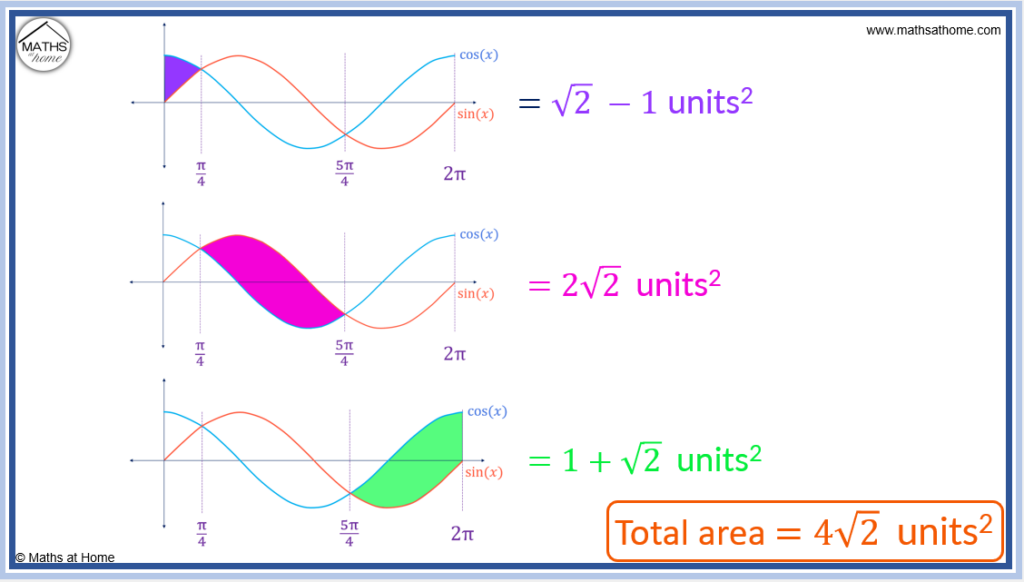
The total area between sin(𝑥) and cos(𝑥) from 0 to 2π is .
Area Between Two Curves with Respect to Y-Axis
To find the area between two curves with respect to the y-axis, integrate the equation of the rightmost curve minus the leftmost curve with respect to y. The limits of integration are the lower and upper points on the y-axis either side of the area required.
For example, find the area bound between the curves 𝑥 = 3y – y2 and x = 0.5y2.
To find the area between two curves with respect to the y-axis, integrate the rightmost equation minus the leftmost equation.
For the region shown, between y=0 and y=2, the rightmost equation is x = 3y – y2 and the left most equation is x = 0.5y2.
Subtracting the 0.5y2 from 3y – y2, the result is 3y – 1.5y2.
The area is found with the integral: .
Completing the integration: .
Evaluating the limits: .
This calculation becomes : which equals
.
